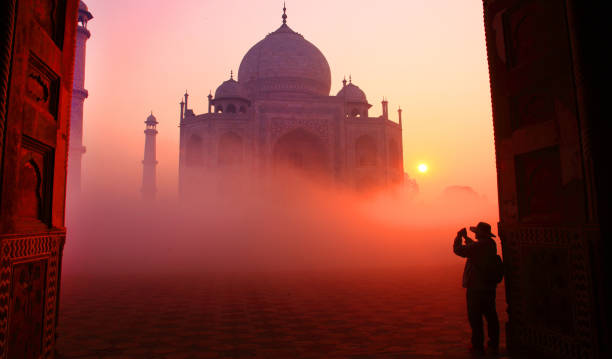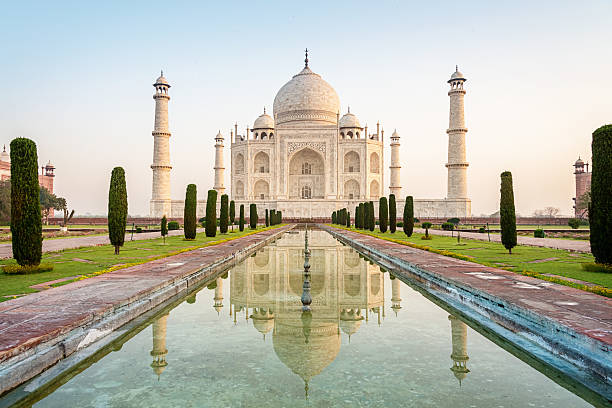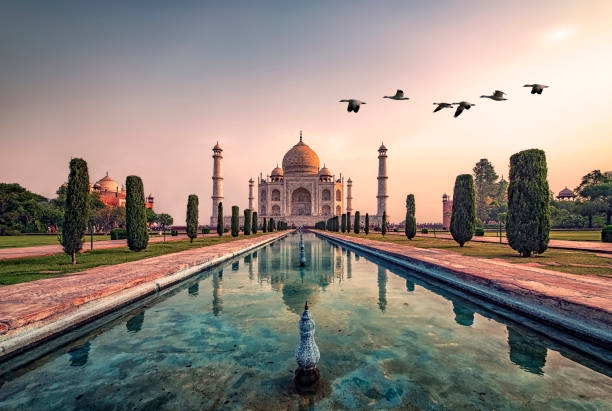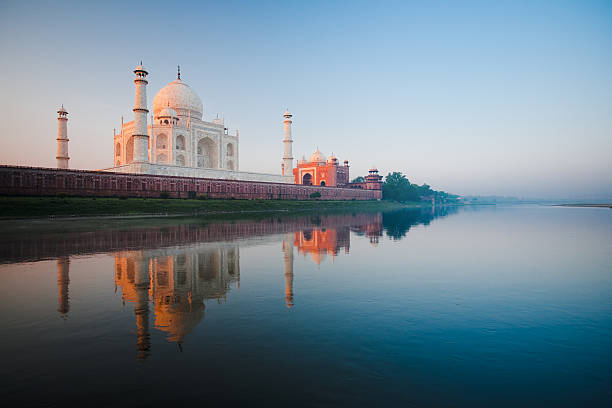Unveiling the Enchantment: 10 Captivating Facts About the Taj Mahal
From love story to architectural marvel, discover the secrets that make the Taj Mahal a timeless wonder.

10 Magical Facts About the Taj Mahal: The Place Where Eternity and Love Collide
Not only is the Taj Mahal a magnificent white marble mausoleum situated on the banks of the Yamuna River, but it's also a mesmerizing tale immortalized in stone. Here are ten fascinating facts that help you understand the Taj Mahal's allure, from its love-inspired beginnings to its breathtaking architectural design:
1. An Eternal Love Story: The Mughal emperor Shah Jahan constructed the Taj Mahal as Mumtaz Mahal, his third wife,'s ultimate resting place. He was devastated by her birth-related death and imagined the Taj as a tribute to their unending love.

2. A Triumph of Teamwork: It took more than 20,000 artists from all around the world, including Turkey, Persia, and India, 22 years to carefully create this marvel. Because jewelers, calligraphers, and stoneworkers put their best into each detail, the Taj is a monument to human cooperation.
3. Beyond Simply Marble: The Taj is primarily made of white marble, but it also has approximately forty-three rare and semi-precious stones, including carnelian, turquoise, and lapis lazuli. The monument gains depth and vitality from these stones, which are painstakingly inlaid with geometric and floral designs, as they sparkle in the sunlight.
4. A Sense of Illusionary Perfection: The main dome's four minarets are constructed with a small outward tilt. This ingenious architectural device makes sure that they will fall away from the mausoleum in the event of an earthquake, safeguarding its structural integrity.
5. A Harmony of Equilibrium: Perfect symmetry is embodied in the Taj Mahal. The monument radiates balance and harmony, expressing the Mughal belief in order and beauty, from the arrangement of its four minarets to the reflection of its image in the reflecting pool.

6. A Changing Canvas: The splendor of the Taj Mahal changes as the light shifts. It looks brilliant white in the morning, blushes pink in the morning, shines white all day, and becomes dreamy in the moonlight. The experience is further enhanced by the ever-changing spectacle.
7. Lost Words in Stone: The Taj Mahal's walls and arches are covered in exquisite calligraphy that features phrases from the Quran in addition to tributes to Mumtaz Mahal and decorative verses. These inscriptions mutter tales of faith, love, and sorrow.

8. Beyond a Simple Tomb: There are expansive gardens, a guest house, and a mosque all part of the Taj Mahal complex. Because of this, it has a calm and contemplative atmosphere that draws people of all religions to come here for pilgrimages and introspection.
9. A Treasure of the World Heritage: The Taj Mahal, which was named a World Heritage Site by UNESCO in 1983, is a representation of India's magnificent architectural design and rich cultural legacy. It never ceases to astound and amaze tourists from all over the world.
10. An Icons of Lasting Love: The Taj Mahal's eternal appeal is derived from its representation of love, an enduring emotion. It serves as a poignant reminder that love has the capacity to surpass bereavement and yield incredibly amazing creations, demonstrating the enduring power of human connection that endures even after millennia.
Thus, keep in mind that the Taj Mahal is more than simply a monument the next time you see it; it's an architectural wonder, a love tale captured in stone, and a representation of unending love that enchants people everywhere.









































































































































































































